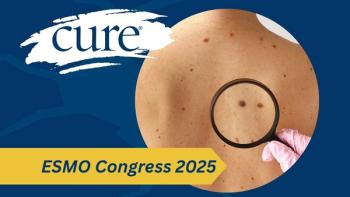
How I Used Turkey Tail Mushrooms Alongside Cancer Treatment
After being diagnosed with lymphoma, I decided to supplement my cancer treatment with turkey tail mushrooms.
In the fall of 2022, I was diagnosed with high grade stage 2 B-cell non-specific, non-Hodgkin lymphoma, a rare blood cancer in which B cells mutate and proliferate to the point they build up tumors. In my case, the tumor grew in my left armpit, impinging the ulnar nerve. The fast-growing cancer can spread throughout the body. Doctors said I’d be dead in three months if I didn't start treatment immediately. Wisely, I immediately began chemo and immunotherapy.
But aside from the protocol, which required six week-long hospitalizations over six months, I did my own research to better understand my cancer and to learn about alternative and/or supplementary options. I had already been interested in the health benefits of mycology, fungus/mushrooms, so I was surprised when I came across research involving the effectiveness of turkey tail mushrooms (Trametes versicolor; referring to its many colors) especially as related to lymphoma. Turkey tail is a shelf mushroom, named that because of the way they grow on dead and decaying trees like little rows of shelves. Because of its positive effects on the immune system. Studies, such as one published in 2023 in the journal, Cureus, show that use of the mushroom improved outcomes among patients who use it in conjunction with cancer therapies.
For thousands of years, mushrooms have been used medicinally in different cultures around the world for their healing properties. The most common include chaga, reishi, lion’s mane, cordyceps and turkey tail, which grows all over the world in varieties. There’s even a look-alike cousin, commonly known as “false turkey tail.”
At first, I ordered little vials of tincture online. There are plenty of companies that make and sell tincture, a concoction of alcohol imbued or infused with the essence of some plant, herb, or, in this case, mushroom. It’s not very expensive and a couple drops a day will do the trick. But I quickly learned to harvest my own turkey tail (I read articles and watched videos by famed mycologist, Paul Stamet, describing what to look for) and to make my own tincture from it. I found a rotting tree along a creek bed that was amazingly abloom with the mushroom, especially around Halloween and Thanksgiving. Yesterday, I came upon a massive bloom on a dead tree during a hike with my dogs. Despite being so late in the season, the mushrooms were mostly still harvestable.
I’ve learned that generally, the fruit (the visible mushrooms) are not as desirable after a deep frost, just like with most fruits or vegetables. You can feel the difference. The mushroom becomes rigid and brittle. You don’t eat the shelf fungus. It would be like chewing rubber. Instead you make tincture out of it. Some folks dry it and pulverize or blend it into a powder to use. I used a teaspoon of chaga and cocoa in my coffee this morning. Nowadays, I double-concoct my tincture, making it a little stronger. It’s a simple process. Anyone can do it. It costs very little. There are plenty of DIY videos online.
Fortunately for me, on a sunny day on Feb. 6, 2023, I “rang the bell” on the oncology floor, signaling that I was cancer free. A follow-up PET scan in late March revealed that the cancer had not returned. Half year later, there was still no sign of cancer. I don’t know how much I can credit the turkey tail with my recovery. But I was back to my old self within six months.
My oncologist was amazed at how quickly and fully my body had recovered. He grabbed my bicep and squeezed it. It was as hard as a rock. “You’ve really been working out,” he said. I can’t tell you how much turkey tail played a role in my cancer experience, but I believe it kept my wracked body as healthy as it could be expected during the torturous cycles of chemotherapy. I encourage others to learn more about the use of turkey tail mushrooms as supplement to any cancer treatment. Be sure to talk with your health care provider before using mushrooms or any other supplement.
For more news on cancer updates, research and education, don’t forget to





